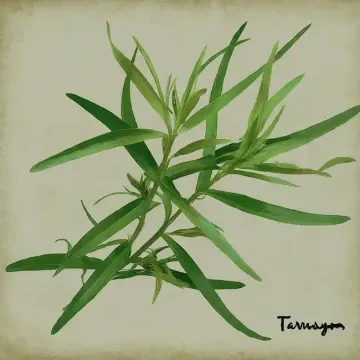Tarragon (Artemisia dracunculus), a perennial herb known for its aromatic leaves, has been a staple in culinary traditions across the globe, especially in French cuisine. Its unique flavor, often described as a mix of licorice, anise, and vanilla, makes it a favorite for adding depth to various dishes. Growing tarragon in your home garden is a rewarding endeavor, providing a fresh and flavorful addition to your culinary repertoire.
History of Tarragon
Tarragon's history is as rich as its flavor. The herb is believed to have originated in Siberia and was later introduced to Europe by the Mongols in the 13th century. The name "tarragon" comes from the Arabic word "tarkhun," meaning "little dragon," likely due to its serpentine root system and its historical use as a remedy for snake bites.
In medieval times, tarragon was not only valued for its culinary properties but also for its medicinal uses. It was believed to cure a variety of ailments, from digestive problems to insomnia. Today, tarragon is primarily grown for its culinary uses, although it still holds a place in traditional herbal medicine.
Health Benefits of Tarragon
Tarragon is not just a culinary delight; it also offers several health benefits:
- Digestive Aid: Tarragon has been traditionally used to stimulate appetite and alleviate digestive issues such as indigestion and bloating.
- Antioxidant Properties: Tarragon contains antioxidants that help protect the body against free radicals, reducing the risk of chronic diseases.
- Anti-inflammatory Effects: The herb has anti-inflammatory properties that may help reduce pain and inflammation in the body.
- Sleep Aid: Tarragon has been used in traditional medicine to promote sleep and alleviate insomnia.
- Blood Sugar Regulation: Some studies suggest that tarragon may help regulate blood sugar levels, making it beneficial for individuals with diabetes.
Culinary Uses of Tarragon
Tarragon is a versatile herb that can enhance a wide range of dishes:
- Sauces and Dressings: Tarragon is a key ingredient in classic French sauces such as Béarnaise and can be used to flavor vinaigrettes and salad dressings.
- Poultry and Fish: The herb pairs exceptionally well with chicken and fish, adding a subtle, anise-like flavor that complements these proteins.
- Egg Dishes: Tarragon is often used in omelets, quiches, and scrambled eggs, where its flavor shines without overpowering the dish.
- Herb Butter: Tarragon-infused butter is a simple yet delicious way to add flavor to vegetables, grilled meats, or bread.
- Herbal Teas: Tarragon can be used to make a soothing herbal tea, often combined with other herbs like mint or lemon balm.
Growing Tips for Tarragon in the Home Garden
Growing tarragon is relatively easy, especially if you follow these tips:
- Climate and Location: Tarragon thrives in warm, sunny locations with well-drained soil. It prefers a Mediterranean climate but can adapt to different conditions.
- Soil Requirements: Tarragon does best in light, sandy soil with a pH level between 6.0 and 7.5. Ensure the soil is well-draining to prevent root rot.
- Planting: It's best to start with young tarragon plants or cuttings, as seeds are often difficult to germinate. Plant them in spring after the last frost, spacing each plant about 18-24 inches apart.
- Watering: Tarragon is drought-tolerant once established, but it still needs regular watering, especially during dry spells. Be careful not to overwater, as this can lead to root rot.
- Pruning and Harvesting: Regular pruning helps keep the plant bushy and encourages new growth. Harvest the leaves in the morning when their essential oils are most concentrated, and use them fresh for the best flavor. Tarragon can be dried or frozen, but its flavor is best when used fresh.
- Overwintering: In colder climates, tarragon may die back in winter. Protect it by applying a layer of mulch around the base or bringing potted plants indoors.
- Pests and Diseases: Tarragon is relatively pest-resistant, but watch out for aphids and fungal diseases. Ensure good air circulation around the plants to prevent fungal issues.
Conclusion
Tarragon is a wonderful addition to any home garden, offering both culinary delights and health benefits. With its rich history and versatile uses, growing tarragon allows you to enjoy fresh, aromatic leaves right at your fingertips. By following the growing tips outlined above, you can cultivate this herb with ease, enhancing your garden and your kitchen alike.

